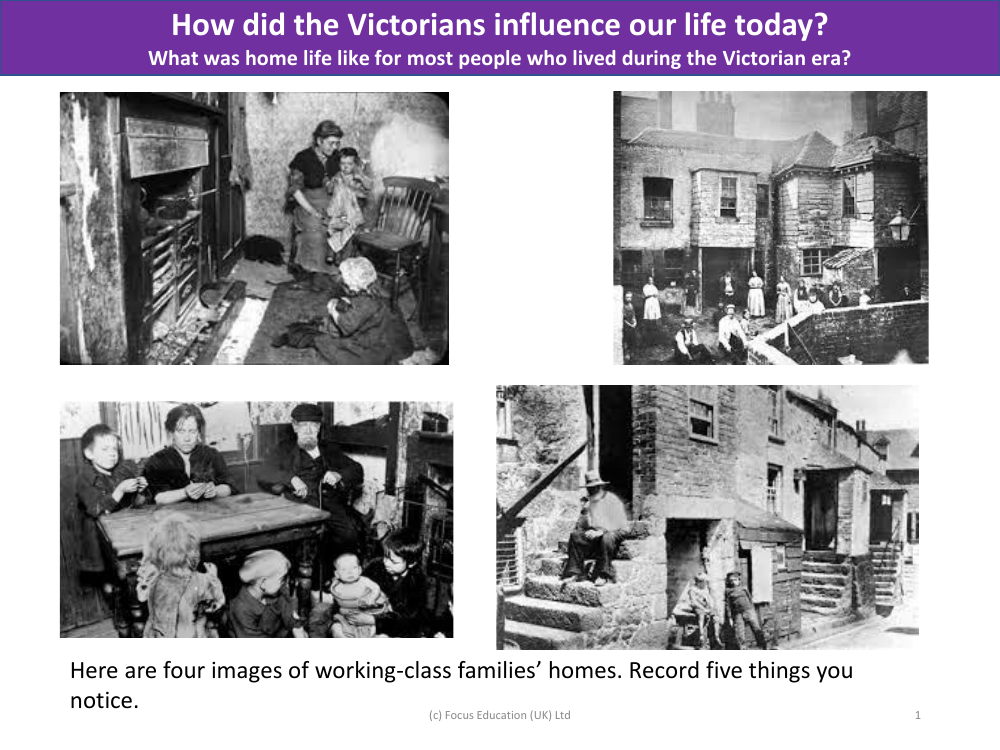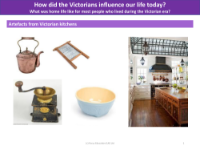Victorian working class family homes - Picture prompts

History Resource Description
In the Victorian era, the working-class family homes were often characterised by their modest and practical design, reflecting the economic status of their inhabitants. Observing the images provided, one might notice the limited space, with rooms serving multiple purposes to accommodate the family's daily activities. The furnishings were typically sparse and functional, lacking the ornate details found in the homes of the affluent. Another common feature was the presence of a fireplace, which served as the main source of heat and was often used for cooking as well. The materials used in the construction and interior of these homes were generally durable and easy to clean, which was necessary given the industrial pollution of the period. Finally, the images may show signs of wear and tear, indicating the houses' constant use and the limited resources available for maintenance and renovation.
The Victorian era has had a lasting impact on our lives today, influencing various aspects of modern living. Architecturally, Victorian design elements can still be seen in contemporary buildings, especially in the UK. Socially, the period saw the beginning of movements towards improved living conditions for the working class, which laid the groundwork for modern social welfare systems. In terms of home life, most people during the Victorian era lived in conditions that were cramped and often unsanitary by today's standards, with large families sharing small spaces. Despite the hardships, the home was a centre for family life, where traditional roles were typically observed, and a strong work ethic was instilled. The period also saw the rise of mass-produced furniture and household goods, which made home comforts more accessible to the working class, a trend that continues to evolve to this day.




